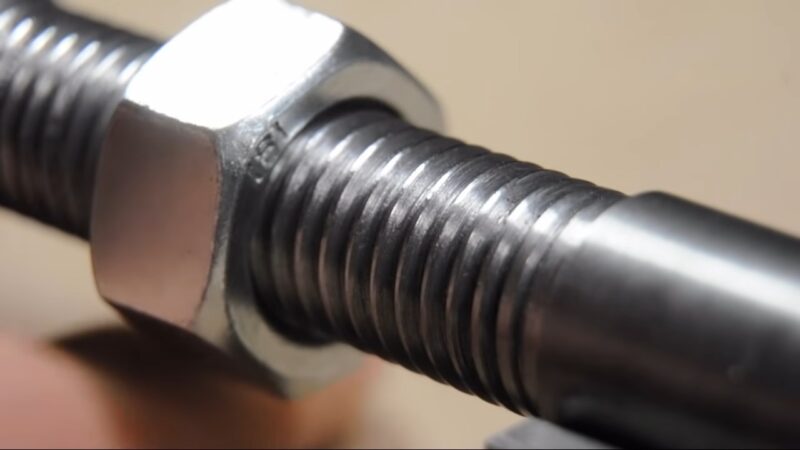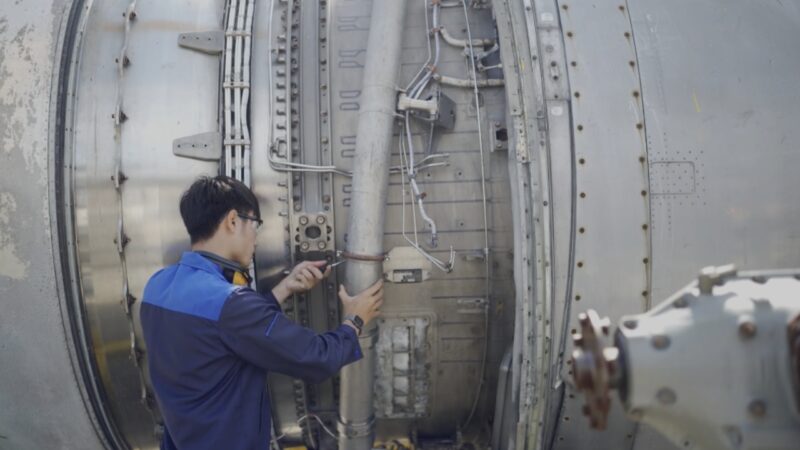Ever since I was a young engineer, the “Righty-Tighty, Lefty-Loosey” rule has been a constant. It’s like an unwritten commandment for any mechanical task. As simple as it sounds, it holds up pretty well for most situations, but is it always true? That’s the question we’ll be answering today.
The Origin of “Righty-Tighty, Lefty-Loosey”
Before we delve deeper, it’s only fitting that we understand the roots of this cardinal rule of mechanics. The first instance of the rule can be traced back to the industrial revolution.
The Industrial Revolution and the Standardization of Screw Threads
The Industrial Revolution brought a wave of standardization in manufacturing, leading to the adoption of the unified thread standard, which influenced the universal acceptance of the “Righty-Tighty, Lefty-Loosey” rule.
In the 19th century, manufacturers began to agree on specific standards for screw threads to ensure uniformity and interchangeability across industries. This move was driven by the growth of mass production and the need for efficiency and consistency.
Clockwise to Tighten, Counterclockwise to Loosen
The “Righty-Tighty, Lefty-Loosey” rule essentially implies rotating the screw or nut clockwise to tighten and counterclockwise to loosen.
The rule takes its basis from the natural human tendency to move from left to right. This convention makes it easier and more intuitive to work with screws and fasteners, especially when using tools like screwdrivers or wrenches.
The Exceptions to the Rule

The “Righty-Tighty, Lefty-Loosey” rule may be universal, but as with everything, there are exceptions to the rule. Certain specialized industries or applications use left-handed threads.
Left-Handed Threads
Left-handed threads are a mirror image of right-handed threads and obey the reverse of the “Righty-Tighty, Lefty-Loosey” rule. They are used in specific applications where a right-handed thread would be inconvenient or dangerous.
Despite being less common, they play crucial roles in various industries. For example, you can find left-handed threads in some automotive parts, bicycles, and gas supply connections. The reason for these exceptions varies – from preventing disastrous mix-ups to compensating for the direction of applied forces.
Notable Examples of Left-Handed Threads
- Gas cylinders: In many countries, oxygen cylinders use right-handed threads, while flammable gas cylinders like propane use left-handed threads. This system helps prevent the disastrous consequences of connecting a gas supply to the wrong device.
- Automotive and Bicycle Industries: In certain automotive parts, such as lug nuts on some cars or the pedals on a bicycle, one side will use a left-handed thread. This is to counteract the force applied during operation and prevent the nut or pedal from loosening.
The “Righty-Tighty, Lefty-Loosey” Rule in Everyday Life

The “Righty-Tighty, Lefty-Loosey” rule finds a broad application in our daily lives. We all interact with items that subscribe to this rule, even without realizing it.
Household Items
The vast majority of screws and fasteners we encounter in our daily lives follow the “Righty-Tighty, Lefty-Loosey” rule. It applies to everything from the screws holding your furniture together to the lids on your jars of jam or pickles.
- Door knobs
- Water faucets
- Light bulbs
- Gas stove knobs
In the Tool Shed
This rule is an essential guide for using various tools, whether you’re an experienced DIY enthusiast or just putting up a shelf. Many tools and their components follow this rule:
- Screwdrivers
- Wrenches
- Drills
Why Some Exceptions Exist

There are underlying reasons why some mechanisms break the “Righty-Tighty, Lefty-Loosey” rule. Many of these reasons are rooted in safety considerations or in the physical forces at play.
Safety Concerns
As mentioned earlier, the use of left-handed threads in gas cylinders helps to prevent accidental mix-ups between different types of gases. This safety feature is designed to avoid potential accidents that could result from incorrect connections.
The Impact of Physical Forces
Another reason for exceptions to the rule lies in the physics involved in rotating objects. For certain mechanisms, a right-handed thread might actually self-loosen during regular operation due to the forces applied. A left-handed thread solves this problem by tightening under the applied force rather than loosening.
The “Righty-Tighty, Lefty-Loosey” Rule: A Guideline, Not a Law

In conclusion, while the “Righty-Tighty, Lefty-Loosey” rule is a useful guideline for everyday tasks, it’s not a universal law. It’s important to remember the exceptions and understand their reasons.
The Rule as a Guideline
The rule of “Righty-Tighty, Lefty-Loosey” stands as a solid guideline for the vast majority of screw threads we encounter daily. It’s a testament to the efficiency of standardization, making our interactions with countless objects more intuitive.
The Exceptions Remind Us to Stay Alert
The exceptions to the rule serve as an important reminder that not everything is as it seems on the surface. As engineers, it’s crucial to be aware of these exceptions, understand their reasons, and incorporate them into our work when necessary. They teach us to remain alert and adaptive, the very essence of successful engineering.
Embark on a multifaceted journey, exploring the diverse world of civil engineering fields beyond the basics.
Exploring the Engineering Behind the Rule

The “Righty-Tighty, Lefty-Loosey” rule is deeply rooted in engineering principles, so it’s worth looking into the nuts and bolts of the concept.
Thread Mechanics Explained
Screw threads are essentially inclined planes wrapped around a cylinder. If you were to unwrap a standard (right-handed) thread, you’d see it slopes upwards from left to right. Turning the screw clockwise moves the screw forward along this slope, causing it to penetrate deeper into the material – or ‘tighten.’
The Impact of Friction
Friction plays a crucial role in the functioning of screws and fasteners. It provides the resistance needed to hold the fastener in place once tightened. Without it, the fastener could slip and loosen. The ‘Righty-Tighty’ rule ensures that the normal forces are applied to enhance friction, maintaining the fastener’s stability.
Other Notable Exceptions to the Rule

Although left-handed threads are a notable exception, there are a few more unusual situations where the “Righty-Tighty, Lefty-Loosey” rule doesn’t apply.
Toggle Bolts
Toggle bolts, used for hanging items on hollow or drywall, operate differently. They employ wings that open inside the wall when you screw the bolt into it. For some toggle bolts, you have to turn them counterclockwise to tighten.
Hose Bibs
An old-fashioned hose bib (the faucet to which you connect your garden hose) could also be an exception. Traditionally, many of these were made with left-hand threads. Although modern hose bibs typically follow the ‘Righty-Tighty’ rule, you may encounter the traditional style in older homes or buildings.
When You Encounter an Exception

So, what should you do when you come across an exception to the “Righty-Tighty, Lefty-Loosey” rule?
Assess the Situation
When faced with an object that won’t loosen or tighten as expected, stop and reassess. Check if it might be one of the exceptions discussed earlier. Remember, forcing a thread in the wrong direction can damage it.
Handle With Care
When you identify an exception, proceed carefully. Especially with gas cylinders and other potentially hazardous devices, ensure you understand the correct operation before proceeding. If you’re unsure, seek advice or help.
Training Your Brain to Adapt

Even as a seasoned engineer, dealing with left-handed threads or other exceptions to the “Righty-Tighty, Lefty-Loosey” rule can be counter-intuitive. Here are a couple of tips to train your brain.
Practice Makes Perfect
As with anything new or contrary to our habits, practice is key. Spend some time working with left-handed threads or other exceptions to get used to them. Over time, switching between right- and left-handed threads can become second nature.
Develop a Mnemonic
Create a mnemonic for the exceptions, such as “Lefty-Tighty, Righty-Loosey,” to help remember the opposite is true. Repeat it to yourself when working with these exceptions until it becomes a habit.
Summing Up: Navigating the Rule and Its Exceptions

The “Righty-Tighty, Lefty-Loosey” rule, while universally applicable, is not without its exceptions. Understanding these nuances and exceptions can greatly enhance your technical skills and problem-solving abilities.
Mastering the Rule
The “Righty-Tighty, Lefty-Loosey” rule is an essential part of every engineer’s toolkit. Mastery of it, along with the understanding of its exceptions, can help us efficiently interact with a plethora of mechanical objects in our daily lives.
Embracing the Exceptions
The exceptions remind us that engineering, much like the world we live in, is beautifully complex and filled with surprises. Embracing these exceptions, understanding their design rationale, and learning how to navigate them enriches our engineering wisdom.
Final Words

Every time I tighten a screw or turn a knob, I’m reminded of the countless engineers who, in their quest for efficiency and standardization, created this universal rule. But, just like engineering, it evolves with exceptions and adaptations. And, as we’ve seen, it’s these exceptions that often hold the key to progress.
Discover some captivating hands-on projects that can captivate young minds and foster a passion for engineering in kids.







